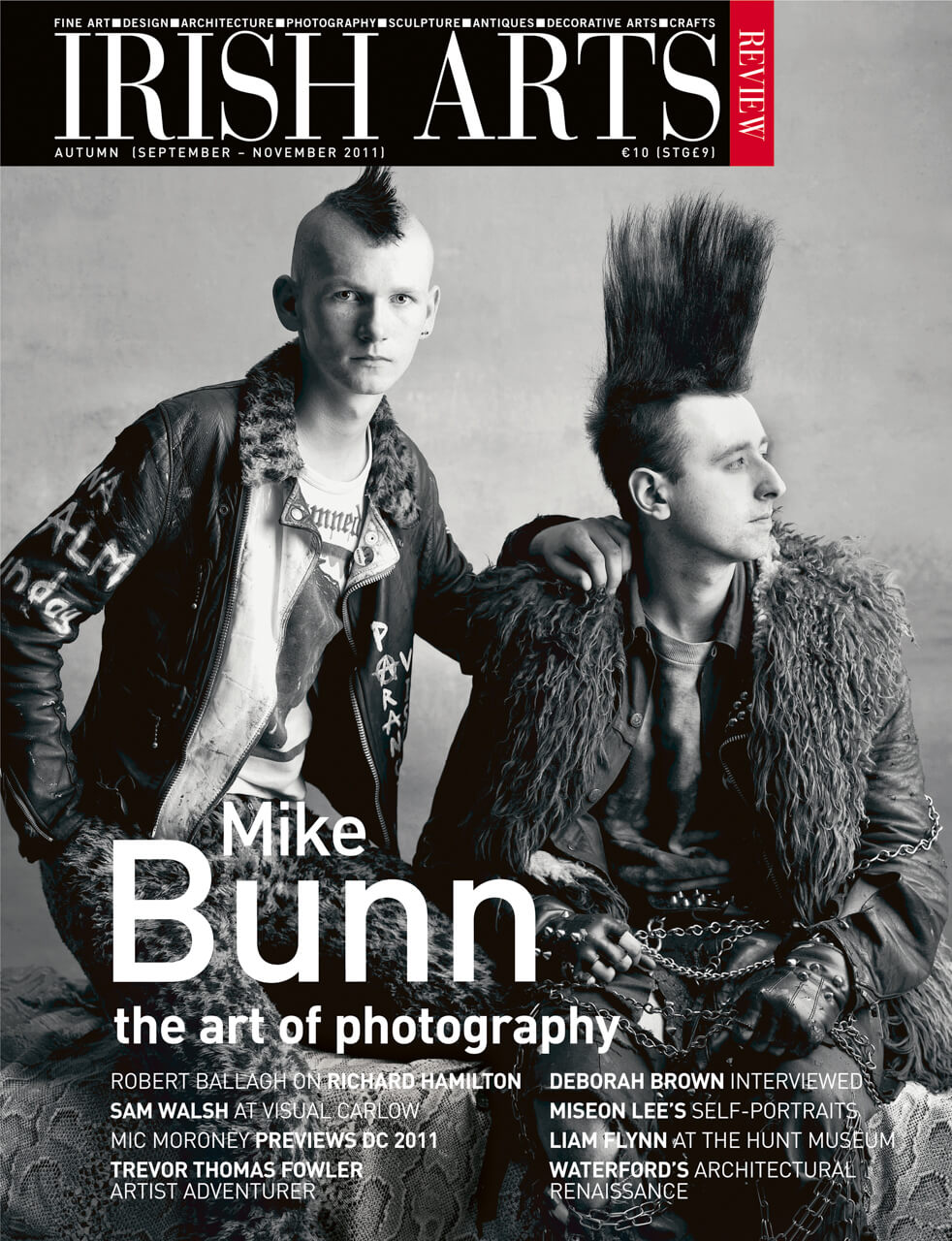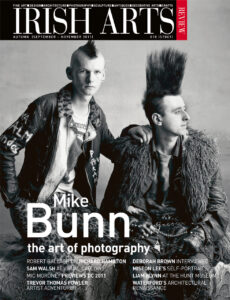

Stephanie McBride talks to Mike Bunn about the craft of old school photography and his plans to establish an academy for photographers
A self-styled chameleon with a camera, Mike Bunn has a daunting CV of awards and acclaimed exhibitions. He sees himself as a visual interpreter, whose work is laced with influences from fine art to popular culture, from noir-ish cinema to album sleeve cover art.
With fellow photographers Anthony Hobbs and Mike O’Toole he is currently planning an Academy for the Photographic Arts in Ireland. The aim is ‘to find an identity and home for pure, creative Irish photography from the past, the present and into the future according to practice and philosophy’. The vision for the academy is the advancement of photography, so often marginalized by more established art forms, to enhance both traditional skills and knowledge as well as embracing newer imaging technologies through exhibition, workshops and masterclasses.
Bunn would be the first to agree that photographic art (as distinct from painting or writing) has certain difficulties. Its historically uncertain status has been buffeted even further by digital technologies, though his old-school and self-taught approach resists some of the inflated claims of mice and pixels. On the one hand he embraces recent developments that have ‘allowed us to flirt with photography in the digital age’, on the other he speaks passionately of ‘etching onto the negative’ and appears sceptical of the sometimes easy slickness that he sees as eclipsing the discipline of art and craft. His conversation bristles with exuberant references to the magic and alchemy of photography, the colour of fog and shadow, of ‘Ireland’s most varied and turbulent light’.
Craft, process and technology – old and new – are all integral to his ways of seeing, and Bunn has experimented and stretched the boundaries of the pinhole technique. He revisits the fundamentals of photography’s play of light and time in this haunting image (Fig 2), completing it with state-of-the-art scanning – a creative fusion of traditional and modern processes. His work is often pulled between personal projects (Figs 4&7) and commissions in which the photographer’s role is to resolve other people’s problems (advertising, sport, PR), yet a common hallmark runs through it all: a strong, classical approach, capturing the light of the moment to reveal the curve of the form or the contours of the face.
He is not the first photographer whose career has had to encompass the push and pull of artistic and commercial imperatives, yet it’s not a crude dichotomy of art versus commerce. Bunn’s passion for photography’s power infuses all his undertakings in a cross-pollination of travel, popular culture, food, fashion – intent upon mining the potential, to ‘sculpt with light’. Perhaps it is his experience as a leading fashion photographer that most clearly informs and shapes his vision. Fashion spreads tend to rub shoulders with adverts and editorial, and it is in this cluttered hurly burly that fashion photographs have to function. In Bunn’s work, the discipline of fashion photography, the carefully judged light, the creation of a mise-en-scéne flows into his landscapes and portraits, all of which are finely calibrated.
A young girl Lioli (Fig 3) remains undaunted by the camera’s gaze, which is neither intrusive nor invasive. The image of an Afghan woman (Fig 8) shows a certain restraint, and her unflinching acceptance of the lens suggests that Bunn’s camera is a conduit rather than a barrier in his explorations. In a series of punk portraits from over a quarter century ago (Fig 5), he reinterprets the usual street-life image of the punk, taking it off the street and into the studio for a more formal, theatrical portrait.
For many, their first encounter with Bunn’s work may have been his poster image of Proinsias de Rossa for the 1989 European elections. It is a PR shot, yet it is infused with an artistic energy through the black-and-white cinematic aura of an Orson Welles-like figure. His more recent work continues to go beyond the glut of the usual PR shots, such as his portrait of Jedward – which strips away their usual image (Fig 6) then invokes James Dean iconography, installing the duo in a gallery of glamorous icons.
Stephanie McBride teaches film, media and visual culture at Dublin City University.
From the IAR Archive
First published in the Irish Arts Review Vol 28, No 3, 2011



